Wat Chiang Man: The Birthplace of Chiang Mai
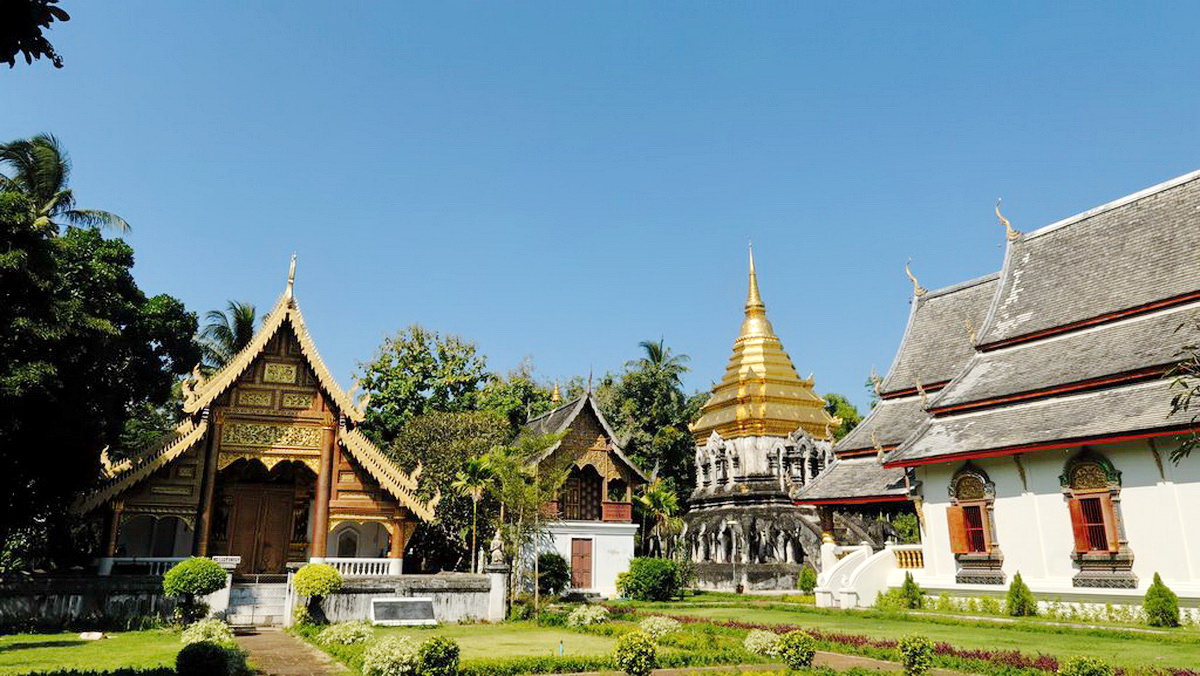
Explore the profound history, priceless artifacts, and stunning architecture of Wat Chiang Man, the foundational temple of the Lanna Kingdom.
📜 The First Chapter of Chiang Mai
Every city has a beginning, a foundational stone from which its story unfolds. For Chiang Mai, that place is Wat Chiang Man. Established in 1296 by King Mangrai, the visionary first ruler of the Lanna Kingdom, this is the city’s very first temple. It was built upon the site of the king’s own royal pavilion, a place where he lived and supervised the creation of his new capital. To visit today is to step onto hallowed ground, the literal starting point of Chiang Mai’s rich and enduring history.
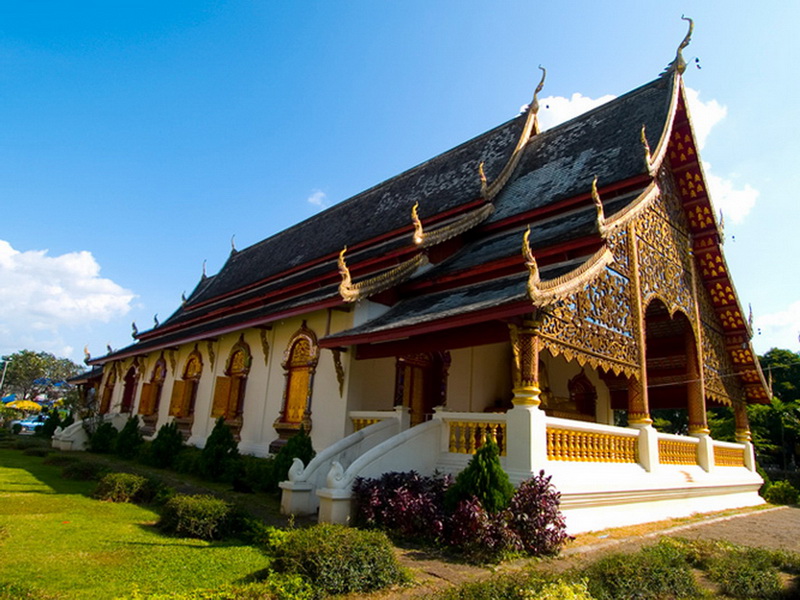
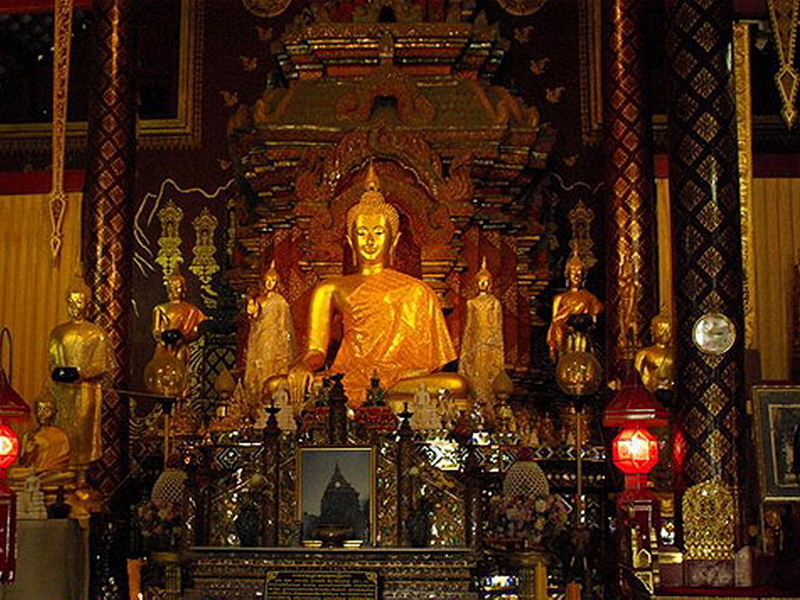
📜 The Royal Inscription: A Tablet of Three Kings
In front of the ordination hall (ubosot) stands a stone tablet of immense historical value. This inscription, dated to 1581, recounts the story of Chiang Mai’s founding. It details the historic alliance between three great kings: King Mangrai of Lanna, King Ram Khamhaeng of Sukhothai, and King Ngam Mueang of Phayao. It confirms that they collaborated on this very site to design the layout of the new city, making this tablet a crucial piece of evidence that solidifies the temple’s status as the city’s genesis.
🏛️ Halls of History and Reverence
The temple grounds host several beautiful structures. The main Vihara Luang is a magnificent example of Lanna temple architecture, with its sweeping, multi-tiered roof and intricately decorated gables. Inside, visitors can pay respect to the principal Buddha image. Also within the compound is a tower dedicated to the revered Lanna monk, Khruba Srivichai, further cementing the temple’s role as a center for Buddhist devotion throughout the centuries. It is rightfully considered one of the most Important Temples in Chiang Mai.

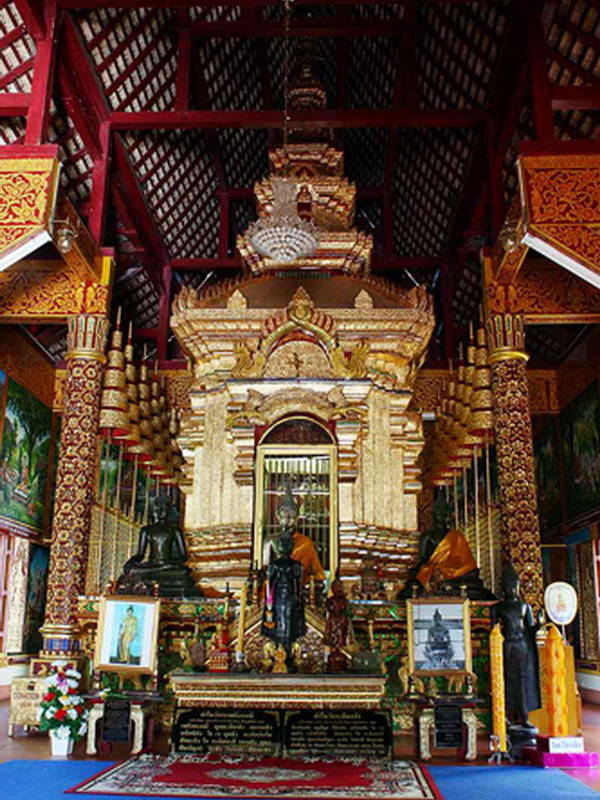
💎 The Sacred Guardians of the City
Within a small, beautifully decorated viharn (assembly hall) lie two of Northern Thailand’s most priceless and revered artifacts. The most famous is the Phra Sae Tang Khamani, affectionately known as the Phra Kaew Khao or Crystal Buddha. This tiny, 10cm tall statue, carved from a luminous clear quartz crystal, is believed to have the power to protect from disaster and bring prosperity. Alongside it rests the Phra Sila, an ancient stone stele in the Pala style of art, depicting the Buddha taming an elephant. This relic is venerated for its believed power to bring life-giving rains, making both statues integral to the spiritual protection of Chiang Mai.
🐘 The Unforgettable Chedi Chang Lom
The architectural centerpiece of Wat Chiang Man is its stunning main stupa, the Chedi Chang Lom or “Elephant-Encircled Chedi.” This Lanna-style monument features a gleaming, gilded upper section resting on a square base. From this base emerge the front halves of 15 life-sized stucco elephants, appearing to carry the entire weight of the structure on their backs. This powerful imagery symbolizes the role of Buddhism in supporting the world, making the chedi not just a work of art, but a profound statement of faith.
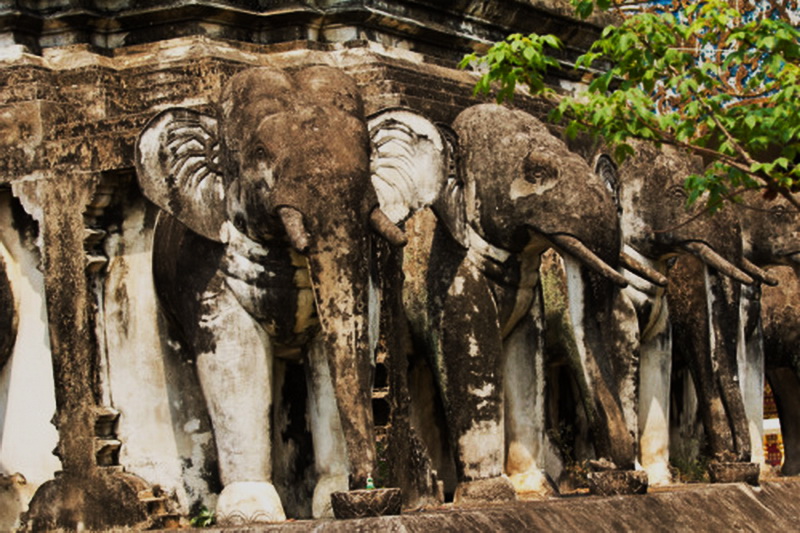
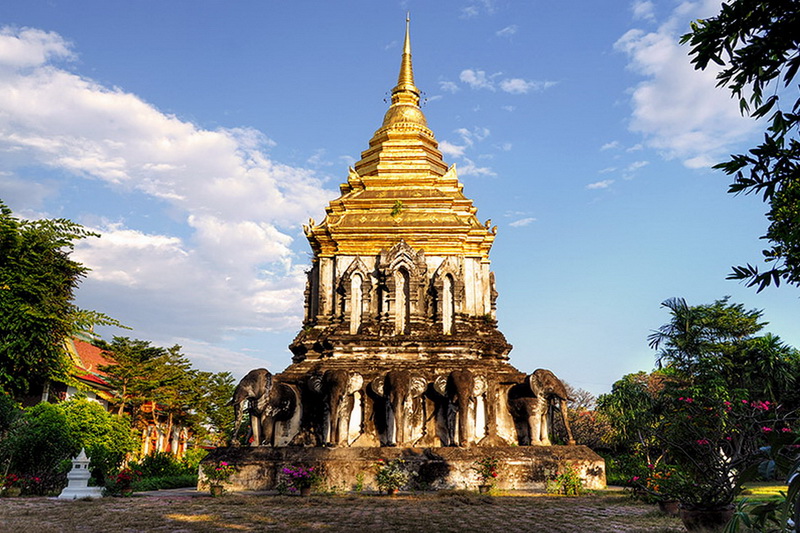
🎉 A Center of Living Culture
Beyond its historical significance, Chiang Man Temple remains an active center of the community. It hosts important local festivals, such as the Tan Guai Salak (or Salak Phat) ceremony, a traditional Lanna merit-making festival where offerings are given to monks. Witnessing such events offers a rare glimpse into the living culture and enduring traditions that have been practiced here for generations, making it one of the most authentic Attractions in Chiang Mai.
💡 Visitor’s Guide & Practical Tips
Wat Chiang Man offers a more serene and contemplative atmosphere than many of the city’s larger temples. It is open to visitors daily, generally from 8:00 AM to 5:00 PM. As a sign of respect, visitors should dress modestly, ensuring shoulders and knees are covered. There is no official entrance fee, but donations for the temple’s upkeep are gratefully accepted. Its peaceful courtyards invite quiet reflection on the centuries of history contained within its walls.
🚗 Getting to Wat Chiang Man
Located on Ratchaphakinai Road in the northeast corner of the Old City, the temple is easily accessible. If driving, follow the one-way road along the inside of the city moat. Alternatively, hailing a local red truck (songthaew) or using a ride-sharing service is a convenient and affordable option. Its central location makes it an essential and easy stop for any Tour Chiang Mai focused on history and culture.
Places Nearby
Wat Phan Tao is one of the oldest temples in the city, with its first structures built towards the end of the fourteenth century while the viharn was built later in 1876. The temple’s name means “temple of a thousand kilns” and is thought to be a reference to the ovens used to cast Buddha images for Wat Chedi Luang, a temple on whose grounds Wat Phan Tao occupies a corner of.
Another one of Chiang Mai’s most famous temples, Wat Phra Singh is a glittering example of Lanna art and temple architecture. One of the most revered temples in the city, Wat Phra houses a beautiful, 15th-century Buddha statue made of gold and copper.
“Chide” in Thai, as you can see massive and very impressive stupa dominating the area. “Luang” in Northern Thai language means “massive”. So wat Chedi Luang simply means the temple of the great stupa. This was probably the largest structure in ancient Chiang Mai. Base of the stupa was around 80 meters each side, and the geight was around 85 meters when it was originally built.
Just outside the old walled city center of Chiang Mai, the Wat Lok Moli is of the city’s older temples. The temple that is also known as the Wat Lok Moli holds one of the largest and most impressive chedis in Chiang Mai.






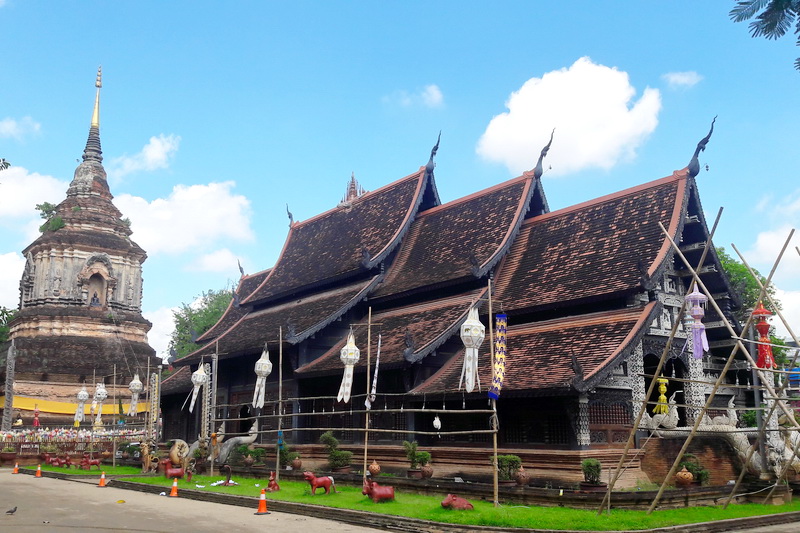

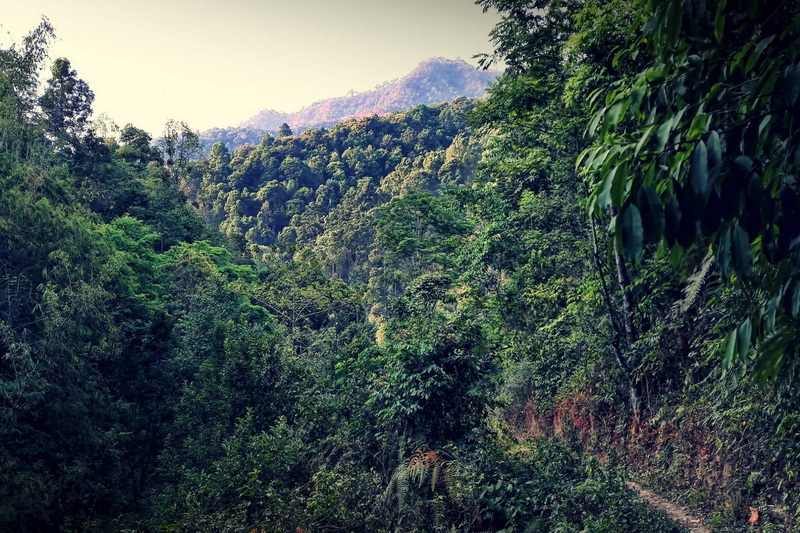




Leave A Comment